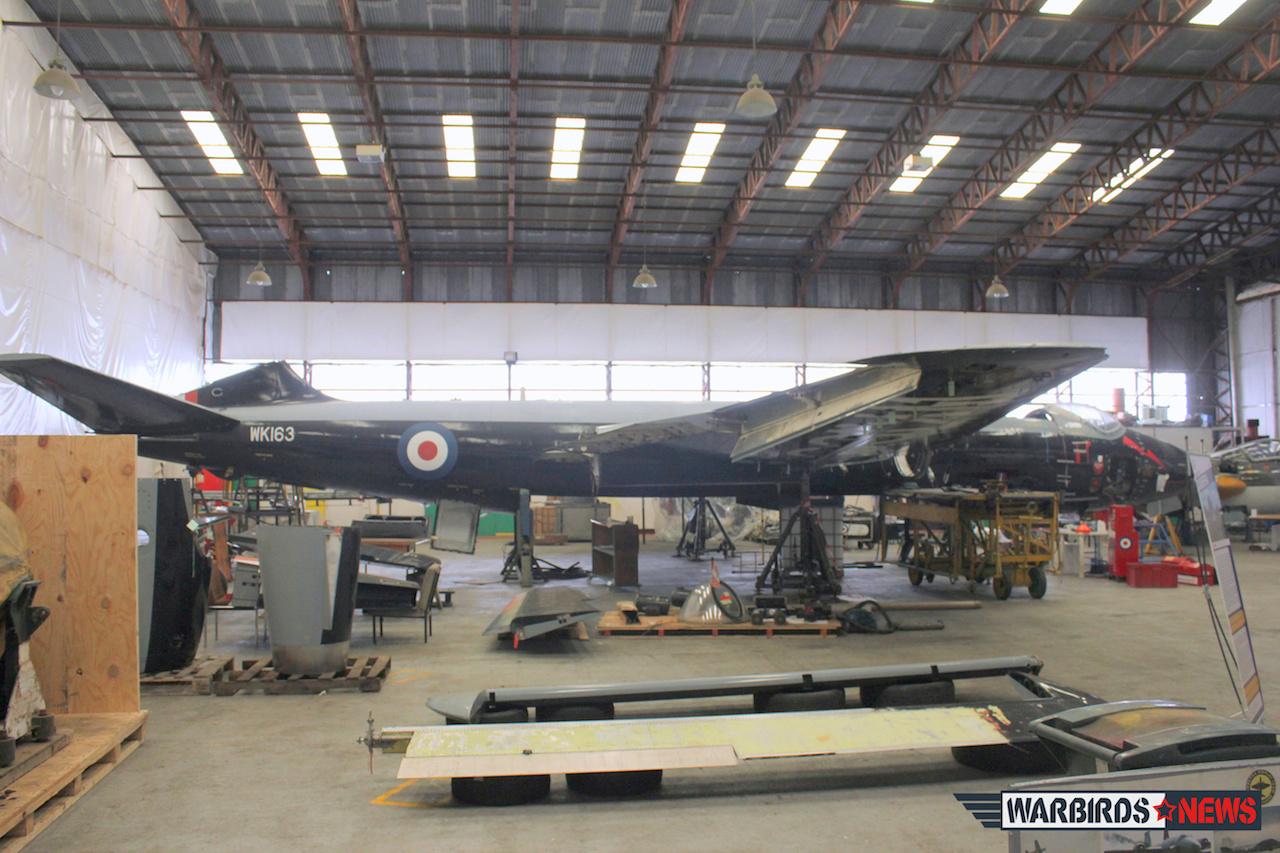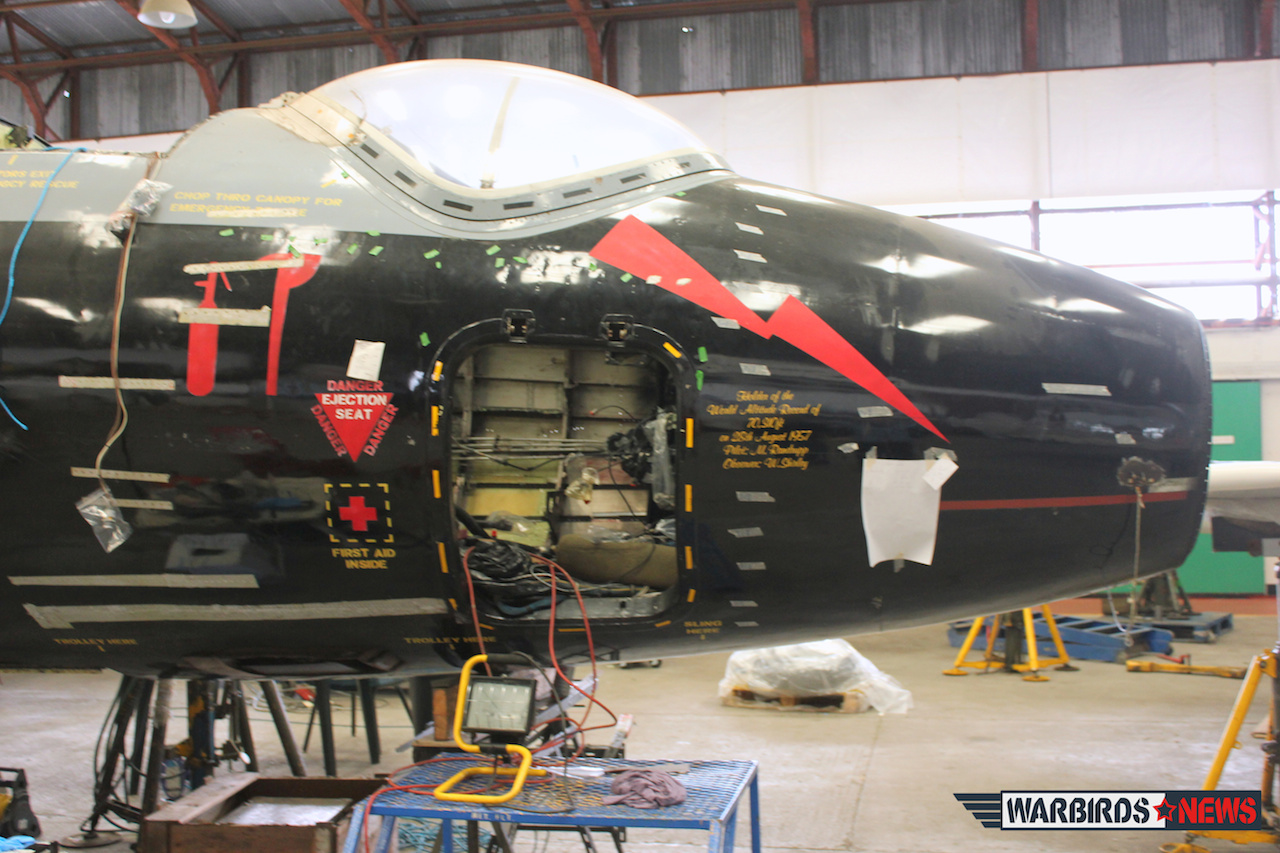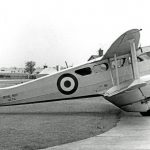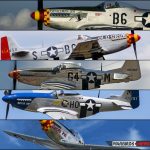Geoff Jones reports:
Work on Classic Aviation Projects Ltd’s English Electric Canberra B.2 restoration at Air Base, Coventry is proceeding well. The Avro Woodford-built Canberra, RAF serial WK163, has been at Air Atlantique’s base in Coventry since March 23rd, 2000, having previously operated for air show work from Bruntingthorpe, Duxford and RAF Wyton.
The aircraft has a significant history, having served as an experimental test-frame with the RAF for several decades. The famous engine manufacturer, Napier retrofitted the Canberra with a 6,000lb thrust Double Scorpion liquid-fueled rocket engine in 1956 as part of an effort to improve the aircraft’s performance at altitude. Flying from Luton on August 28th, 1957, Napier’s chief pilot, Mike Randrupp, and chief engineer, Walter Shirley, boosted WK163 from their cruising altitude of 44,000ft to 70,310ft using the Double Scorpion engine, setting what was then a world altitude record.
Interestingly, WK163 is actually a hybrid of several airframes. The RAF upgraded the mainplanes and engines with units from an anonymous Canberra B.6 in April, 1966, and later exchanged the forward fuselage with Canberra B.6 XH568 in April 1972 while the aircraft served at RAF Pershore in Worcestershire. The modifications were part of the RAF’s development of an infrared line scan camera system for low-level nighttime reconnaissance missions. WK163 moved to RAE Bedford in 1976 and continued to serve as a test airframe, receiving many different modifications through the years, and closing out its service days testing primary sensor systems for the Panavia Tornado program. The Ministry of Defense decommissioned the aircraft in 1994, whereupon Classic Aviation Projects acquired her. Interestingly, the organization also owned Canberra XH568, and re-swapped the forward fuselages between the two jets so they had their original units back in place. WK163 returned to the livery it wore during its record-breaking 1957 flight, and flew on the air show circuit in 1997 to commemorate the historic event.
Unfortunately WK163 suffered an engine failure in 2006 following a bird strike, and hasn’t flown since. However, it is now undergoing a lengthy scheduled major inspection at Coventry, including a full corrosion report on airframe and engines. Classic Flight found a suitable replacement Rolls-Royce Avon 109 in the US, but maddeningly, this incurred damage beyond economic repair during its transit to Coventry. The teams engineers are now looking closely at the existing engines, stripping them down comprehensively to examine corrosion levels. A recent Aviation Safety Review suggests it may be possible to ameliorate the corrosion issues, so Air Base has initiated a plan to raise funds for the engine repairs. Potential sponsors can “buy a compressor vane”, and in return will receive a damaged one that actually flew in the Canberra before its untimely grounding.
As far as WK163’s airframe is concerned, progress is good so far, particularly in the cockpit area. Several components are currently away for servicing, but others have returned and the re-build process has commenced. A full re-paint is planned upon the airframe’s completion using a low-bake oven to make the aircraft look superb and improve her corrosion resistance.
For those who wish to help the Classic Air Force, who own the Canberra and a number of other vintage aircraft, please visit HERE.
























